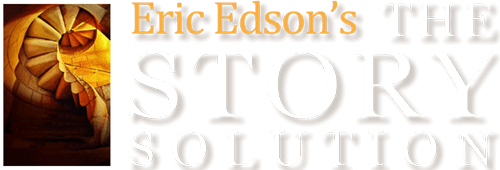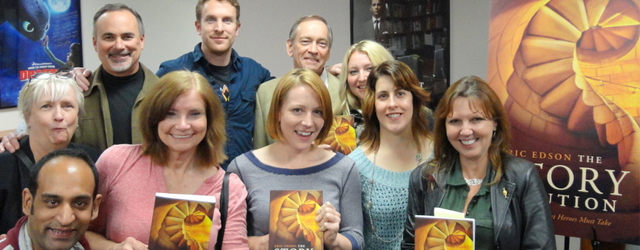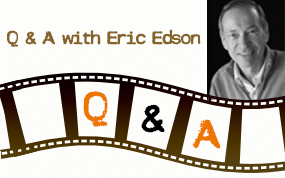How We Feel A Story by Eric Edson
[vc_row][vc_column][vc_column_text]Article written for the book NOW WRITE! Speculative Genres
Writers create fiction so they can touch peoples’ hearts.
Okay, blurting it out this way does sound a bit cornball. But compressed to its essence, human truth often comes out sounding sentimental. Doesn’t mean it isn’t true. We don’t write just to preach high-toned themes about saving the planet or how we should all treat each other with a good deal more kindness. No, we seek to construct an emotional experience that leads readers to discover for themselves the real merit of our unspoken, subtextual themes. In order to be effective, all stories – whether written to be read only, or to be read and then filmed – must impart emotion.
One of the big challenges for writers in the “What If?” speculative genres of horror, fantasy, or sci-fi is keeping stories focused from the start on what the lead character is experiencing emotionally and not let the tale get too lost in the dazzle of the special world going on all around that hero or heroine. Because the very first step for all storytellers is to create a bond of sympathy between the reader and the central character. Every reader needs to care deeply about the hero before they can be brought to feel deeply in the story.
To connect with any hero a reader must first, on one level or another, like him. So the most crucial job when beginning your story is to introduce the lead in a way that fosters immediate character sympathy. This remains true no matter if your hero is a classic good-guy type or some moody, morally questionable antihero.
Constructing a lead character we care about does not mean inventing a flawless person. We see more of ourselves in people who are eccentric or defensive, who say the wrong thing at exactly the wrong moment. But writers must always remember to balance character flaws with strengths. For a reader to connect emotionally, the heroine’s strengths must outnumber her failings.
An actual recipe exists, a list of nine ingredients that elicit sympathetic responses when connecting readers to your lead. The more of these nine character attributes you include, the more emotionally effective your story becomes. Using six is good. Seven is even better. So here are the personality traits and plot circumstances that have been creating sympathetic heroes for over two thousand years:
1. COURAGE. Not optional. Your lead has got to have guts. We identify more readily with flawed people, yes, but those flaws cannot include a lack of courage because only brave people take action, and only action can drive a story forward.
2. UNFAIR INJURY. After courage, the second quickest way to bond a reader to your heroine is to place her at the outset in a situation where blatant injustice is being inflicted upon her. Few things stir our passions like injustice. Unfair Injury also demands that the heroine DO something in response – an excellent place to start any story.
3. SKILL. We admire people who possess the grace, expertise, and mental acumen required to become masters of their chosen work. Doesn’t matter what your hero’s field of endeavor might be – tinker, tailor, CEO – as long as he’s expert at it.
4. FUNNY. We warm to people who make us smile. We’re naturally drawn to folks with a humorous view of the passing parade. So if you can possibly bestow upon your hero a robust and playful sense of humor, do it.
5. JUST PLAIN NICE. We can easily care about kind, decent, helpful, honest people, and we admire those who treat others well, relate with respect to people in humble walks of life, and who defend the weak or stand up for the helpless.
6. IN DANGER. If when we first meet the heroine she’s already in a situation of real danger, it grabs our attention immediately. Danger means the imminent threat of personal harm or loss. What represents danger in any particular story depends on the scope of your tale. In fantasy, horror, and sci-fi it’s almost always the life or death kind.
7. LOVED BY FRIENDS AND FAMILY. If we’re shown right off that the hero is already loved by other people, it gives us immediate permission to care about him, too. How many movies have you seen that begin with a surprise party thrown for the hero by a room full of adoring friends, or some other get-together taking place where affection gushes from a doting mom, dad, sibling, mate, child, or best friend?
8. HARD WORKING. The heroines and heroes we care about have an enormous capacity for work. People who work hard create the energy needed to drive a story forward.
9. OBSESSED. Obsession keeps brave, skilled, hard-working heroes focused on a goal, which is enormously important for any story. Driving obsession creates an active plot.
There are other qualities of character that can help create a hero we want to root for, but these are the never-to-be-ignored basic nine. Use them liberally.
At the start of the sci-fi/horror film I Am Legend hero Robert Neville (Will Smith) is portrayed as a man of Courage who faces Danger, Unfair Injury, and a lot of Hard Work, while he is Loved by Family and Friends, Nice, Funny, highly Skilled as a medical researcher and Obsessed with achieving victory over an epidemic of vampires. Nine out of nine. And the movie was a huge hit.
Early on in the mega-budget sci-fi film Green Lantern hero Hal Jordan (Ryan Reynolds) is portrayed as a childish, irresponsible man often lacking in real courage, who constantly messes up and displays little genuine skill, is lazy and unreliable, thoughtless and unkind, a test pilot who uses his wing-woman as a decoy during a combat exercise then thinks it funny when he gets her “shot down,” who crashes his own fighter jet unnecessarily with no thought about its half-billion dollar cost to the nation, a man whose humor is mean and snarky and who few people really like or trust. That’s zero out of nine. And this movie was a mega-bomb at the box office.
Invite your readers to care. Then they will eagerly climb aboard for your story ride.
EXERCISE
Get the DVD of any commercially successful American movie with one hero or heroine in it. You can check for the level of box office success at BoxOfficeMojo.com. Commercial success here just means the story worked emotionally for lots of people. Picking a one-hero film simply keeps this exercise focused and clear.
From the point where the hero first enters the story, study the next twelve to fifteen
minutes of the movie. Write down both character STRENGTHS and WEAKNESSES demonstrated by the hero. Then answer the following questions:
- How many of the nine sympathy tools are used to establish the hero?
- How are the hero’s weaknesses presented so as not to harm sympathy?
- Are any sympathy tools used besides the nine listed here?
- After spending these opening minutes with the hero, are you drawn to keep watching the film or not? Why?
- If the hero is portrayed by a movie star, what personal characteristics of the star him- or herself help bond you to the hero?
Eric Edson is a professor of screenwriting and author of the book THE STORY SOLUTION: 23 Actions All Great Heroes Must Take. He has written seventeen feature screenplays on assignment for companies including Sony, Warner Brothers, Disney, CBS, and Showtime, and he is Director of the Graduate Program in Screenwriting atCaliforniaStateUniversity, Northridge.[/vc_column_text][/vc_column][/vc_row]



